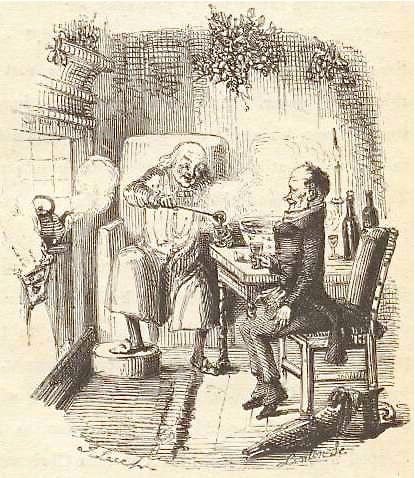
Alcohol flows freely in the writing of Charles Dickens. Though drinking was largely frowned upon in Victorian society, Dickens enjoyed drinking in moderation, and felt that nobody should begrudge the citizens of England this simple, age-old pleasure. Dickens was known to have a fondness for sweet alcoholic punches, which were quite popular at the time. One such drink, a mulled wine punch known as a Smoking Bishop, is mentioned in his timeless holiday classic, A Christmas Carol.
“A merry Christmas, Bob!” said Scrooge, with an earnestness that could not be mistaken, as he clapped him on the back. “A merrier Christmas, Bob, my good fellow, than I have given you, for many a year! I’ll raise your salary, and endeavour to assist your struggling family, and we will discuss your affairs this very afternoon, over a Christmas bowl of smoking bishop, Bob!”
– Charles Dickens, A Christmas Carol (1843)
The Smoking Bishop is a classic example of a Victorian mulled punch. In Food and Cooking in Victorian England – A History, Andrea Broomfield discusses the history of this sweetly spiced wine beverage. “Its whimsical name recalled its medieval origins when it was sometimes served at guildhalls and university banquets in bowls that resembled a bishop’s miter. In keeping with the clerical theme, Victorians also enjoyed Smoking Pope made with burgundy, Smoking Cardinal made with Champagne or Rhine wine; Smoking Archbishop fortified with claret; and Smoking Beadle that called for raisins and ginger wine.”
The earliest recipe I could find for Smoking Bishop appears in Apician Morsels – Tales of the table, kitchen and larder by Dick Humelbergius Secundus (1829). This Georgian era book also contains a bit of history on the beverage:
Among the ‘Oxford night-caps’ bishop appears to be one of the oldest winter beverages on record, and to this very day is preferred to every other, not only by the youthful votary of Bacchus, at his evening revelry, but also by the grave Don by way of a nightcap. It is not improbable that this celebrated drink, equally known to our continental neighbours under the somewhat similar name of bischof, derived its name from the circumstance of ancient dignitaries of the church, when they honoured the university with a visit, being regaled with spiced wine.
– Dick Humelbergius Secundus, Apician Morsels
To recreate the flavor of Dickens’ Smoking Bishop, I combined the period-accurate recipe found in Apician Morsels with a more modern version found in Drinking with Dickens, a book written by Dickens’ great-grandson Cedric. The two recipes are similar, with one notable difference – the Tales of the Table recipe calls for lemons, while the Dickens recipe calls for Seville Oranges (sour oranges). Seville oranges are difficult to come by in California at this time of year, so I’ve used a combination of oranges and lemons to replicate the flavor. In Drinking with Dickens, Cedric Dickens notes that Seville oranges aren’t in season in England till January or February, which would make it impossible to prepare the drink as written for the Christmas holiday. Cedric’s solution is to make the Smoking Bishop in January and bottle it for the whole year. If doing this, he suggests fortifying the drink with Orange Brandy and omitting the port before bottling. When ready to serve, heat the drink, add the ruby port with a cup of water, and enjoy.
Recommended Products:
We are a participant in the Amazon Services LLC Associates Program, an affiliate advertising program designed to provide a means for us to earn fees by linking to Amazon.com and affiliated sites. As an Amazon Associate I earn from qualifying purchases.
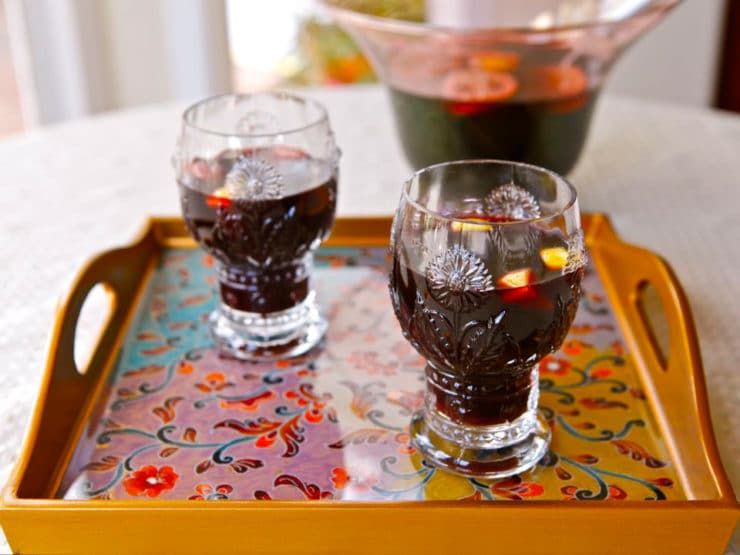
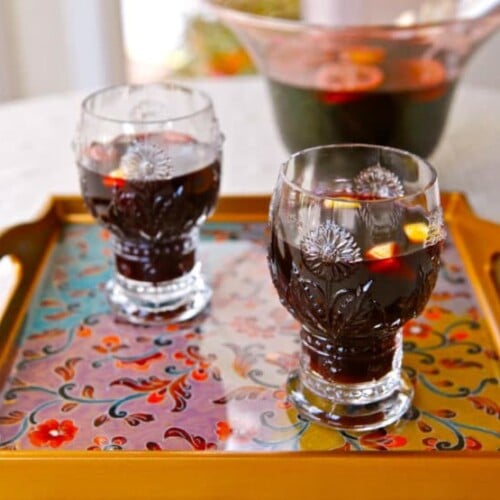
Smoking Bishop
Ingredients
- 5 oranges
- 2 lemons
- 30 whole cloves
- 1/4 teaspoon cinnamon
- 1/4 teaspoon allspice
- 1/4 teaspoon mace
- 1 piece fresh ginger root (thumb-sized), peeled and cut into chunks
- 750 milliliters red wine (1 bottle)
- 1/2 cup sugar, or more to taste
- 750 milliliters ruby port (1 bottle)
Instructions
- If using organic oranges and lemon, remove any stickers and scrub them clean gently with a brush or rough sponge, then pat dry. If using non-organic citrus, fruit will have a thicker layer of wax on the peel. It is best to remove the wax from the outer peel before proceeding. To do this, combine 1 cup of water with 2 tbsp distilled white vinegar and 1 tbsp lemon juice. Pour the solution into a spray bottle and spray the fruit to coat, or dip the fruit into the solution to cover completely. Let the fruit sit for 10 minutes, then rinse under cool water and scrub gently with a brush or rough sponge till the wax is removed. Pat dry.

- Preheat oven to 300 degrees F. To start, you will need the 5 oranges and 1 of the lemons; reserve the second lemon for later. Make 5 small incisions with a sharp knife into each orange and the lemon. Stick whole cloves into each incision. Place oranges and lemon on a baking sheet.Place the fruit in the oven. Let it roast for about 75 minutes, until the peels begin to lose their bright color and turn paler. Remove fruit from the oven. Replace any cloves that have fallen from their incisions, then place the fruit into the bottom of a large bowl.

- In a small saucepan, combine 1 cup of water with the cinnamon, allspice, mace, and ginger chunks. Whisk together and bring to a boil. Simmer the mixture for a few minutes, stirring frequently, till the liquid is reduced by half. Remove from heat.

- In a larger pan, pour the bottle of red wine (not the port) and heat over medium high till it boils. Reduce heat to a slow simmer, then pour in the sugar and whisk till it dissolves. Let the wine simmer for 10 minutes. Stir in the spiced liquid mixture. Remove from heat.

- Pour the heated wine over the roasted oranges and lemon. Stir the fruit and wine gently to combine.Cover the bowl with a towel or plastic wrap. Place the bowl in a warm corner for 24 hours. I like to keep it closed in the oven, with the oven turned off—it seems to stay warmer than the rest of the kitchen due to the pilot light, especially during the winter.

- After 24 hours, slice the oranges and lemon in half. Juice them into the spiced wine.

- Pour the wine mixture through a wire mesh strainer into a pot to remove large spices and solids. Press down gently on the solids with a spoon to remove as much liquid as possible.

- Add the bottle of port to the pot. Stir and heat over medium till hot, but do not boil.

- Vapors will begin to rise from the warming wine—this is the “smoking” part of the “smoking bishop.” Taste the mixture; add more sugar to taste, if desired.

- Cut the remaining lemon into rounds or wedges and float them in the warmed wine. Pour the wine into heat-safe mugs or glasses, or serve in a punch bowl.

Nutrition

tried this recipe?
Let us know in the comments!
Note: Cocktail can only be made kosher by using kosher-certified liquor and bottled beverages. For kosher-certified alcohol choices, check out the links below:
Research Sources
Broomfield, Andrea L. (2007). Food and Cooking in Victorian England – A History. Praeger, Westport, CT.
Dickens, Cedric (1984). Dining with Dickens. Elvendon Press, UK.
Dickens, Cedric (1980). Drinking with Dickens. Elvendon Press, UK.
Dickens, Charles (republished 2011). The Complete Works of Charles Dickens, Kindle Edition. Amazon Digital Services, Inc.
Herbst, Sharon Tyler and Ron (2009). The Deluxe Food Lover’s Companion. Barron’s Educational Series, Inc., Hauppauge, NY.
Pool, Daniel (1993). What Jane Austen Ate And Charles Dickens Knew. Touchstone, New York, NY.
Secundus, Dick Humelbergius (1829). Apician Morsels – Tales of the table, kitchen and larder. Google Books.
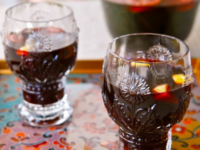
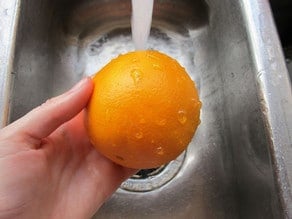
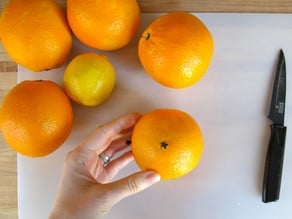
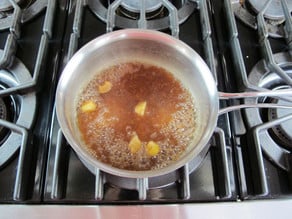
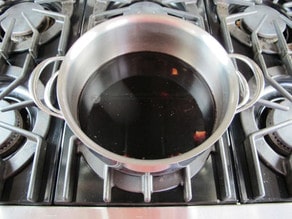
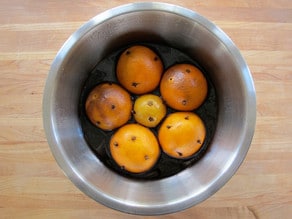
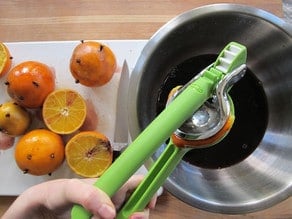
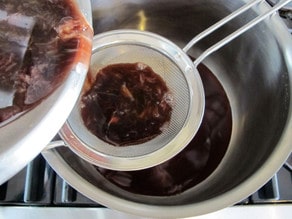
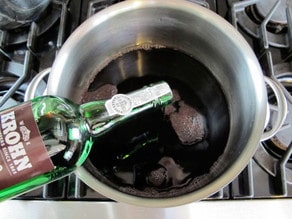
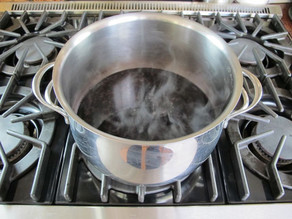
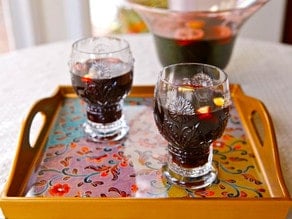


I love your historical recipes! Is there any particular type of red wine that should be used, i.e. pinot noir, or burgundy, etc.?
Thanks Carol! None is specified. I would think a nice Merlot or Cabernet Sauvignon would work well here – something with medium sweetness.
Fantastic! Been using this recipe for the past two years and it has always turned out great.
I’d been listening to an audio of A Christmas Carol in the bakery. Googling Smoking Bishop I found your juicy post. Fantastically interesting and merry work.
Excellent recipe. I made this the first time for an office holiday; it was a huge hit. Thanks for the great posting!
This is a fine fine fine drink! Simply splendid.
It knocks the socks off mulled wine and it is worth going through the stages. I had slightly more sugar than recommended and it was lovely (not a lot, about 3/4’s of a cup).
Will be making a larger batch next Christmas as I have experimented in making it today.
Well done Rick Stein for bringing this drink to my attention with his Christmas programme.
I made this last year for relatives that were visiting for Christmas. Now I will have to make it every year! The key here is DON’T cut corners on anything. When she says to use ruby port, use RUBY port, not any other kind. I even used the same brand, took my time, and it was so worth it!
Tori, I made the recipe, just tasted it today after adding the port and it is excellent. My friends Kathy was here visiting and we enjoyed it very much. Next time I will add a little more sugar, perhaps about 3/4 of a cup of simple syrup. A lovely drink for a cold winter’s night! I didn’t have the charming little goblets to serve it in, as shown in your photo,so I used Lenox crystal Irish Coffee mugs.
Just found this recipie, I will be trying gift this Thanksgiving….. I have a feeling this will be a new tradition !
Hi. I was hoping you might be able to shed more light on the brand and quantity of orange brandy to use. I’d like to make a batch of this and set it aside until next Christmas. Thank you!
I’ve made this before and it was a big hit. I’d like to make it ahead of time. Any suggestions on how I’d do that? Keep it in the pot I heated the wine in? In the fridge? The oven I could store it in doesn’t have a pilot light.
Thanks for your help.
W
Wendy, I would refrigerate it until ready to serve, then reheat before serving. Add the fresh lemon slices just before serving.
Those glasses are nice, what brand?
I got them at Anthropologie 🙂
We moved into a So Cal San Diego home where the former owners were citrus crazy. I have tangelos, tangerines, all of which make the oranges tastes bitter. Limons, (yep, yellow on the outside, green on the inside.) and some kind of bad tasting grapefruit that is a Phillipino delicacy (I am told.) Sorry to load you with this…..but I figure one of these must resemble a sour orange! One had even been chopped down and after two years we have a fully grown orange tree for juicing.
Hello Tori
Maybe you know this already but in England when making seasonal mulled wine (it is not normally bottled) people tend to use clementines (both the zest and the juice) for the citrus flavour. Those are indeed in season during Christmastime. I hope it helps! Great website!
Gabriela
Thank you Gabriela! Yes, I should have mentioned clementines. I sometimes forget we have an international audience here online! 🙂
Dick Humelbergius Secundus lifted his bishop recipe word for word from a book published in Oxford in 1827 called Oxford Nightcaps by Richard Cook. This little book seems to be the earliest in the English language which contains a recipe for the drink. In Cook’s Oxford version it is made with roasted lemon. Eliza Acton quotes this recipe. It was called plain bishop before Dickens added the adjective ‘smoking’ to give an atmosphere of a fuming bowl. I am sure that he was not referring to the drink’s name as Smoking Bishop, but the appellation stuck as A Christmas Carol grew in popularity. The drink was very popular in Germany and Scandinavia, where the ceramic bishop mitre bowls were made. There is a Swedish recipe from 1755.
Very interesting Ivan! Thank you for sharing. 🙂
Hi Tori!
I’ve tried a few recipes for Smoking Bishop in the past, but this year I’m making yours (as I type, in fact, the fruit is in the oven). I’m curious if you’ve tried this recipe using honey or some other sweetener, and how historically accurate would it be? How historically accurate are our modern sweeteners?
Had a good look through the blog, Tori, it’s excellent.
Thanks Dave!
After seeing a version of this recipe on Rick Stein’s cookery programme in the UK I found your blog. I’ll be making this following your instructions for Christmas Day. Thank you.
Enjoy Dave!
Thanks for all the writings. I was researching for a Dicken’s Christmas cooking class and found your blog. Although I have a menu, I will be tweaking it to reflect a bit more of the era.
Hey, just wanted to leave an update and tell you that my family LOVED this recipe! It’s officially on the yearly holiday round of recipes to make.
So happy you enjoyed it! Thanks for letting me know. 🙂
Latley I’ve used this recipe for mulled wine (http://www.davidlebovitz.com/2012/12/hot-mulled-wine-recipe-vin-chaud/) but yours is much more complex. I might have to commit to a longer process and try this one out!
McKenzie, I’m guessing David’s mulled wine is excellent. I’m not sure if the longer process of making a Smoking Bishop improves the flavor much, but it is fun to “taste” the history by making the drink the way it was made in the Victorian age. Enjoy!